Symptoms of prostatitis can make a man's life unbearable. Experienced doctors will help to solve the problem quickly.
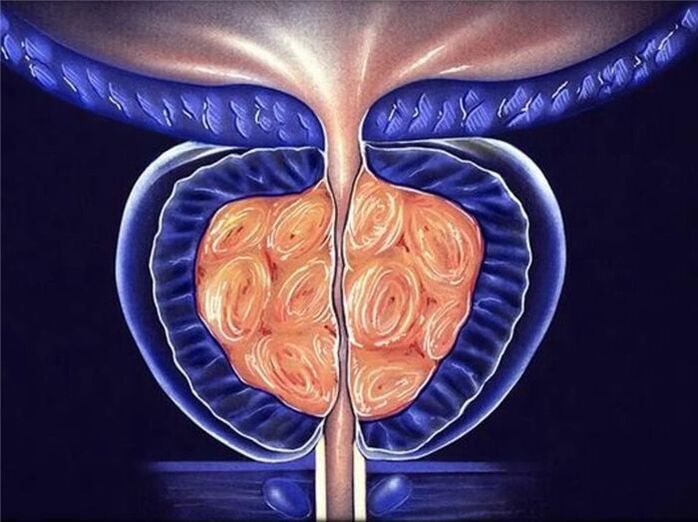
Inflammation of the tissues of the prostate gland (prostate gland) is called prostatitis. The prostate gland is an endocrine organ that affects a number of processes in the male genitourinary system. With its inflammation, there are problems with urinary function, potency, libido and ejaculation. Manifestations of prostatitis significantly worsen the quality of life, affect reproductive function. According to statistics, inflammation of the prostate gland is the most common disease of the genitourinary system in men today.
Symptoms of prostatitis
The symptoms of the disease can be both acute and almost invisible. If you experience the following symptoms, even if they are minor, it is better to consult a doctor immediately to confirm or deny the diagnosis.
- Micturition disorders: frequent urging, especially during night sleep, accompanied by weak or intermittent flow, pain, difficulty urinating.
- Pain in the lower abdomen, enters the anus, scrotum, perineum.
- Decreased libido, impotence or sexual dysfunction.
- Change in consistency, color, amount of discharge, difficulty in discharge.
When determining the signs and symptoms of prostatitis in men, do not self-medicate and do not use recommendations from the Internet. At best, they won't help you, at worst they can harm you. In addition, failure to consult a doctor on time leads to aggravation of the condition.
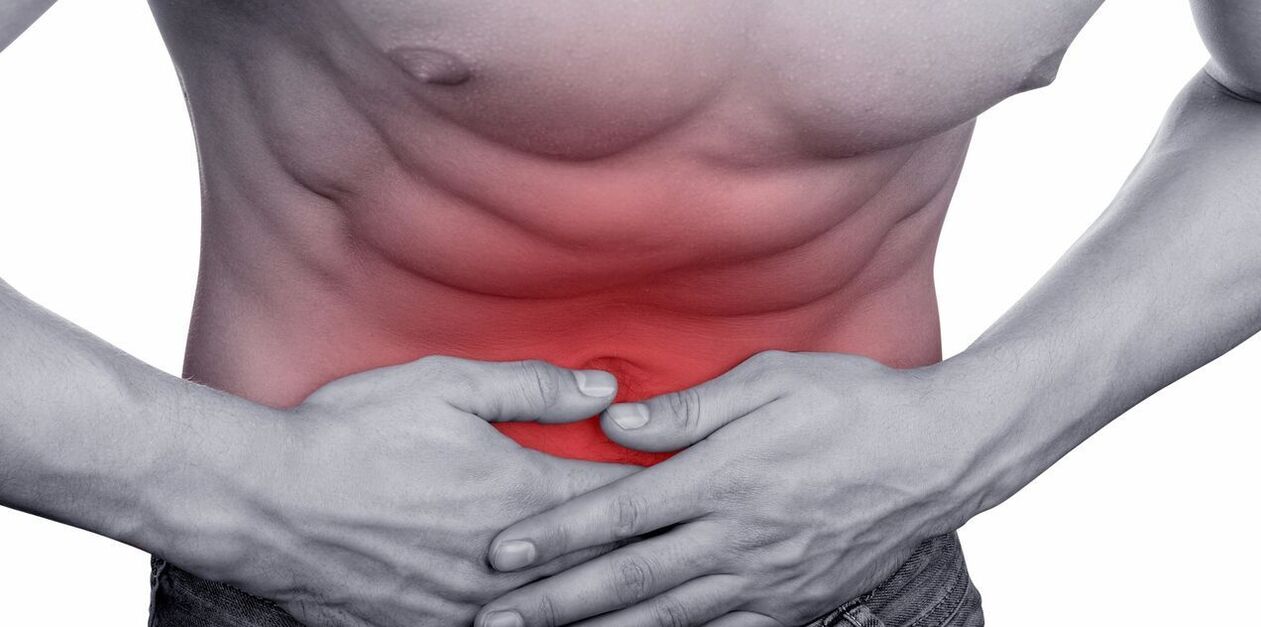
Symptoms of different types of prostatitis
According to the nature of the flow, there are:
Typical symptoms of acute prostatitis:
- fever, a sharp increase in body temperature (up to 40 degrees);
- severe headache, weakness, fatigue, irritability;
- pain in the groin, back, when urinating, frequent urge;
- change in the quality of urine (more cloudy, viscous, mixed with blood), unusual discharge from the urethral canal.
If you do not consult a doctor in time, acute prostatitis can cause complications:
- abscess in the body of the prostate;
- vesiculitis (inflammation of seminal vesicles);
- colliculitis (inflammation of the seminal tubercle);
- the formation of scars and adhesions in the gland and spermatic cord;
- stagnant processes in the tissues of the prostate gland;
A feature of the chronic form is the blurring of clinical manifestations and symptoms of prostatitis. Manifestations are similar to the acute form, but are slow in nature. The causes of pathology, as a rule, are abacterial prostatitis, prostatosis (blood stagnation in the vessels).
Diagnosis and treatment
Inflammation of the prostate gland has a characteristic clinical picture. An experienced urologist can easily make a diagnosis after taking an anamnesis, examination and palpation, laboratory and instrumental studies (general and bacterial urine and blood tests, blood tests for PSA, sample of prostate secretion, spermogram, ultrasound).
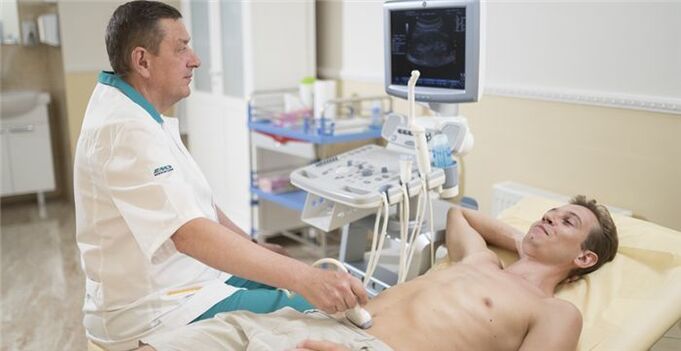
If the patient turns to a specialist in time, the treatment of prostatitis involves a complex approach and gives excellent results.
The modern clinic is equipped with modern high-tech equipment for diagnosis and treatment of diseases of the genitourinary system. Qualified subtle doctors will provide you with effective and most appropriate help.

Symptoms of prostatitis: pain, burning, ejaculation, pain, urinary incontinence
Symptoms of prostatitis are mostly of 3 types:
- Urinary disorders: difficult, frequent, nocturnal urination.
- pain symptoms: pain in the perineum, lower abdomen, groin. The pain may radiate to the scrotum or sacrum.
- mixed form with both urinary disorders and pain.

Causes of prostatitis?
For bacterial prostatitis
Infection enters the prostate gland from neighboring organs: through blood and lymphatic vessels from a distant inflammatory site (tonsillitis, sinusitis, caries).
The most common bacteria found in prostatitis are: Escherichia coli, Klebsiella, Proteus, Staphylococcus aureus, Enterococcus.
The role of sexually transmitted infections is discussed: chlamydia, mycoplasma, trichomonas.
The activity of the inflammatory process and, accordingly, its manifestations depend on the characteristics of the microorganism, the condition of the pelvic organs, their blood circulation, accompanying diseases and other predisposing factors.
For non-bacterial prostatitis
Stagnation plays an important role. Disruption of blood flow causes swelling and exudation of prostate tissues and creates conditions for the development of an inflammatory process unrelated to the bacterial agent.
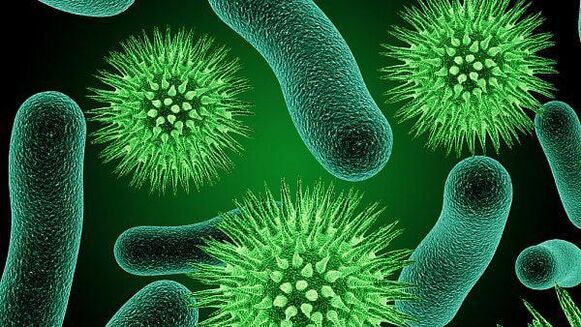
STDs and prostatitis
The question of the participation of sexually transmitted infections in the development of prostatitis is widely discussed in scientific medical circles. There is no single opinion on this matter.
We believe that there is a direct relationship between infections and the occurrence and course of prostatitis.
Why is prostatitis dangerous?
Prostatitis does not pose a threat to the patient's life, the process becomes chronic and worsens the quality of life.
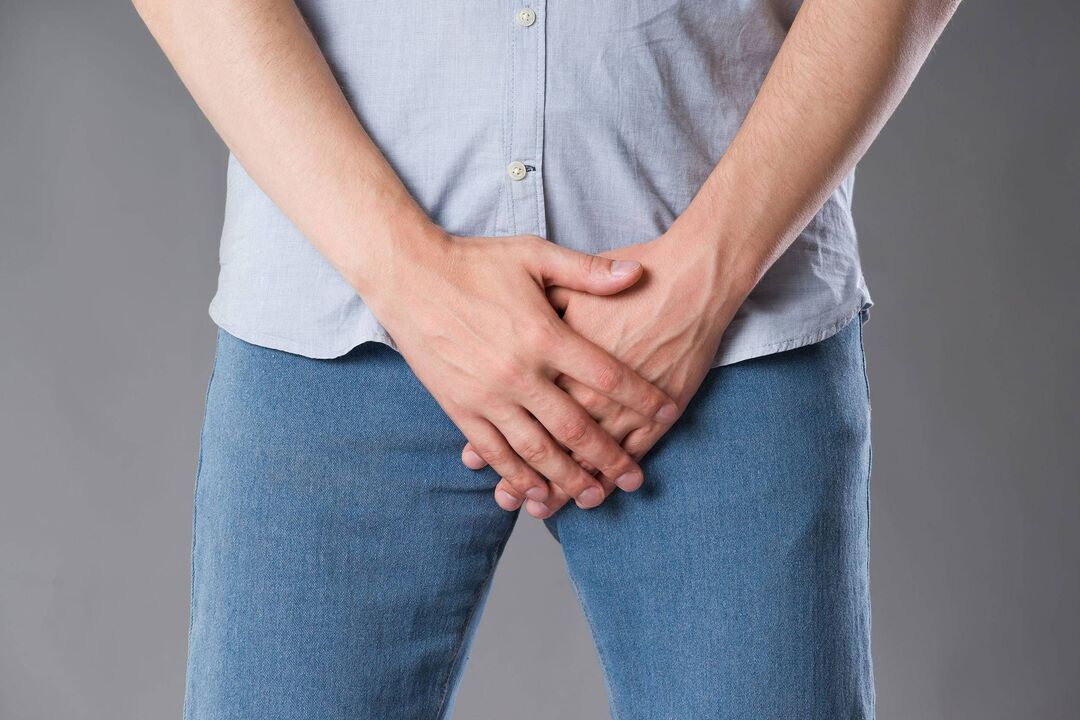
Initial prostatitis. How to determine? First signs
The first signs of prostatitis are changes in the nature of urination: difficult, frequent urination, frequent urination, especially at night. Discomfort during urination and pain in the groin of varying intensity.
Prostatitis age? Is it a disease of the young and/or old?
Prostatitis is an inflammatory disease, so it can occur at any age. But adenoma or hyperplasia of the prostate gland is an age-related disease in men over 50 years of age and is associated with the development of benign prostate tumor.
Chronic prostatitis. Is it possible to treat?
The diagnosis of chronic prostatitis implies the presence of lifelong changes in the structure of prostate tissues. Like any chronic disease, prostatitis continues with periods of exacerbation and remission - a period in which the patient does not worry about anything. With the right treatment and lifestyle, periods of remission can be very long, and complaints will not bother the patient again.

Bacterial and other types of prostatitis
There are various classifications, the most commonly used one was developed by the US Institute of Health in 1995:
- Category IAcute prostatitis.
- Category II.Chronic bacterial prostatitis.
- Category III.Non-Bacterial Prostatitis/Chronic Pelvic Pain Syndrome - without obvious signs of infection and lasting 3 months or more.
- III subcategory A.Chronic inflammatory pelvic pain syndrome (with the presence of leukocytes in the secretion of the prostate and the release of the pathogen).
- Subcategory III B.Chronic non-inflammatory pelvic pain syndrome (without leukocytes in prostate secretion).
- Category IV.Symptomatic prostatitis (with leukocytes in prostate secretion, but without complaints).
For ease of understanding, the classification can be represented in 3 types:
Acute prostatitis- continues with severe pain, fever, impaired urination. In the secret of the prostate - a large number of leukocytes, indicating a clear inflammatory process. It usually happens for the first time in this patient. If these symptoms occur in a patient with chronic prostatitis, then they are called an exacerbation of chronic prostatitis.
Chronic bacterial prostatitis- The symptoms that bother the patient from time to time, as a rule, are less expressed than in acute prostatitis. When the diagnosis is made, an increase in leukocytes in the secretion of the prostate is also observed, it is possible to determine the cause of inflammation.
The most difficult thing is to make a diagnosisnon-bacterial prostatitis, or so onchronic pelvic pain syndrome. This is due to the fact that the complaints are very similar to prostatitis, but they are associated with diseases of other organs and systems where signs of inflammation and pathogenic bacteria cannot be detected: spasm of pelvic muscles, impaired interaction between muscles. of the bladder and its sphincter, anatomical disorders - narrowing (narrowing) of the urethra, causing inflammation due to increased pressure within the lobules of the prostate gland.
Who treats prostatitis - andrologist or urologist?
Treatment of prostatitis is carried out by both a urologist and an andrologist.
An andrologist is a urologist specializing in diseases of the male sex and reproductive sphere.
Prostatitis treatment methods and schemes
All prostate treatment regimens consist of drugs: drugs that improve prostate and bladder contractions while relaxing the sphincter.
Good results are achieved with the simultaneous application of drugs and physiotherapy (prostate massage, complexes for the treatment of prostatitis).
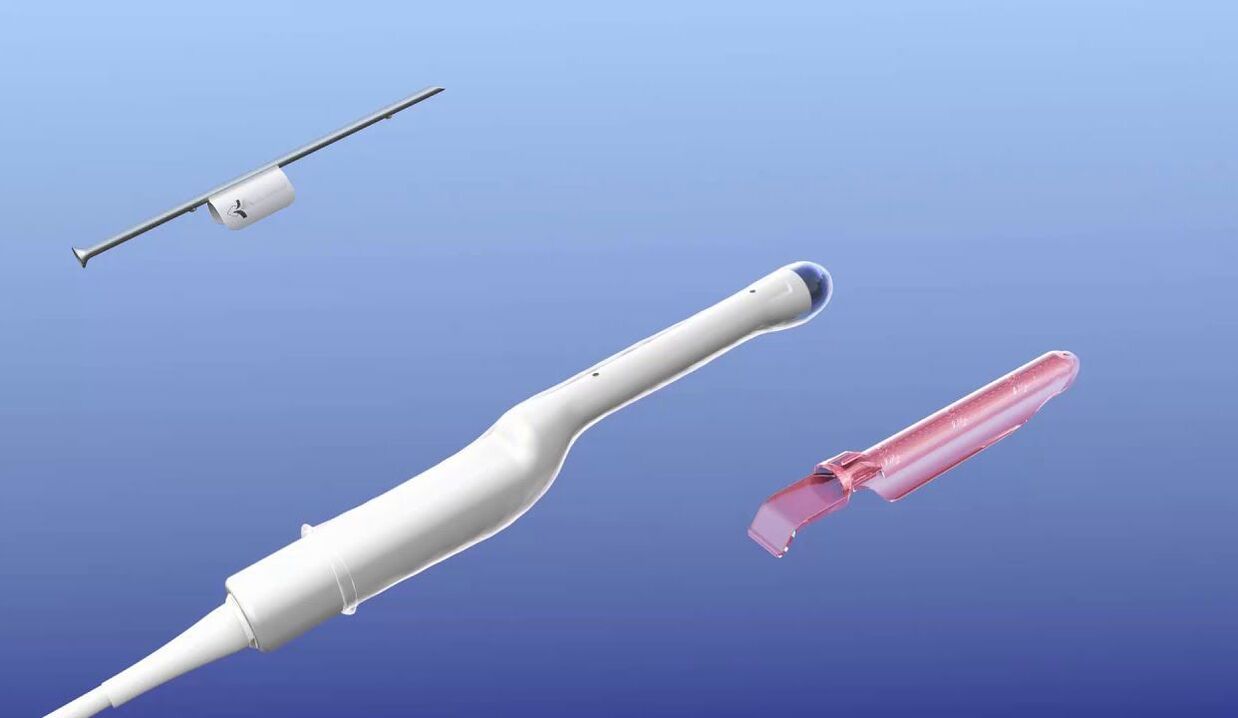
What tests are given for prostatitis?
fordiagnosis of prostatitisa consultation with a urologist (andrologist) is required to collect patient complaints, medical history, microscopy of prostate secretions and ultrasound diagnostics.
Transrectal ultrasonography (TRUS) of the prostate and prostate secretion obtained after prostate massage are used for microscopic examination for diagnosis.
In addition, smearing of the secret of the prostate gland with bacterial flora can be used to determine the sensitivity of the inoculated microflora to antibiotics.
Surgical interventions and operations for prostatitis
Operations with prostatitis are practically not used. With the exception of prostate abscess - a process in which foci with purulent content are formed.
Can you treat prostatitis yourself?
In case of severe symptoms, it is better to be treated by a specialist, the time factor in treatment is of great importance, because the longer the inflammation lasts, the higher the probability of irreversible changes in the body.
But it is better to do prevention yourself, no doctor will do it for you.
Avoid hypothermia, prolonged sitting, sexually transmitted infections, irregular sexual activity - all this is a way to effectively prevent prostatitis.
Medicines for prostatitis
Medicines for the treatment of prostatitis are divided into groups according to the mechanism of action:
Antibacterial substances (antibiotics)prescribed only if there is one diagnosis: chronic bacterial prostatitis. The most commonly used are fluoroquinolones, macrolides and doxycycline group of drugs.
Alpha blockers:It is prescribed to restore impaired urination, increase the contraction of the bladder and relax its detrusor.
large groupbiogenic stimulants and herbal preparations.
Effective treatment is possible only with the correct diagnosis, because there are no universal drugs for all types of prostatitis. Often, patients take drugs for the treatment of prostatitis, if they have a completely different disease, but with similar symptoms.

Nuts, carrots, parsley, cucumber, honey, bees, leeches and other folk remedies for prostatitis
Folk methods of treatment have the right to exist, but you should understand that it is very difficult to choose a folk method that suits you. Please, treatment of prostatitis by folk methods, search engine gives 70 million results.
No one has investigated the effectiveness of folk methods. What worked (and did) for one patient with such treatment does not mean it will work for you.
Exacerbation of prostatitis after treatment. remission, relapse
All chronic inflammatory processes have periods of exacerbation and remission, when nothing bothers the patient. The duration of remission can be different and depends on many factors, including whether the patient undergoes preventive treatment. As a rule, patients who receive periodic preventive treatment without waiting for deterioration of well-being have less frequent exacerbations.

Prostate massage at home. Is massage always necessary for prostatitis?
Prostate massage can also be done at home if you are married to a urologist nurse. Any medical manipulation has its subtleties and nuances. Only a doctor can determine the indications for this procedure, therefore, for some diseases: prostate adenoma (in case of acute urinary retention), prostate massage is undesirable, and it is contraindicated for tumors.
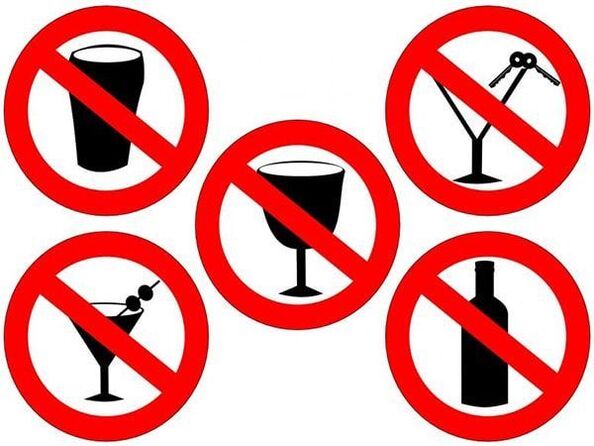
alcohol and prostatitis
Alcohol itself does not cause the development of prostatitis, it is a factor that increases the stagnation and swelling of the prostate gland, thereby contributing to its development.
Sexual life and prostatitis
There is a direct relationship between the intensity of sexual activity and prostate disease. With long-term abstinence, stagnation occurs in the prostate, which worsens metabolic processes and contributes to the development of inflammatory processes by disrupting blood microcirculation. Regularity is more important than intensity of intercourse for prostate health. Excessive sexual intercourse, especially with different partners and unprotected against infections, is the fastest way to prostatitis.

Does prostatitis affect women?
The effect on the health of a woman with prostatitis in a partner certainly exists. The prostate, together with the seminal vesicles, produces the liquid component of semen, which enters the partner's genitals during sexual intercourse. The main danger can be the presence of a sexually transmitted infection or bacterial prostatitis, which can cause inflammatory diseases in a woman.
Pregnancy and prostatitis
Since the prostate gland produces the liquid part of sperm, which contains nutrients for spermatozoa, often in prostatitis there is a decrease in the quality of sperm, which makes it difficult to get pregnant.

Prevention. What to do to prevent prostatitis?
Prevention is directly related to the climate where the patient lives and his occupation.
Prevention of prostatitis is to avoid and minimize the factors that contribute to the development of prostatitis. It is necessary to avoid hypothermia, replace sedentary work with periods of physical activity. Regular sex life is important for prostatitis.
Prostate gland. What it is and how its health affects male fertility
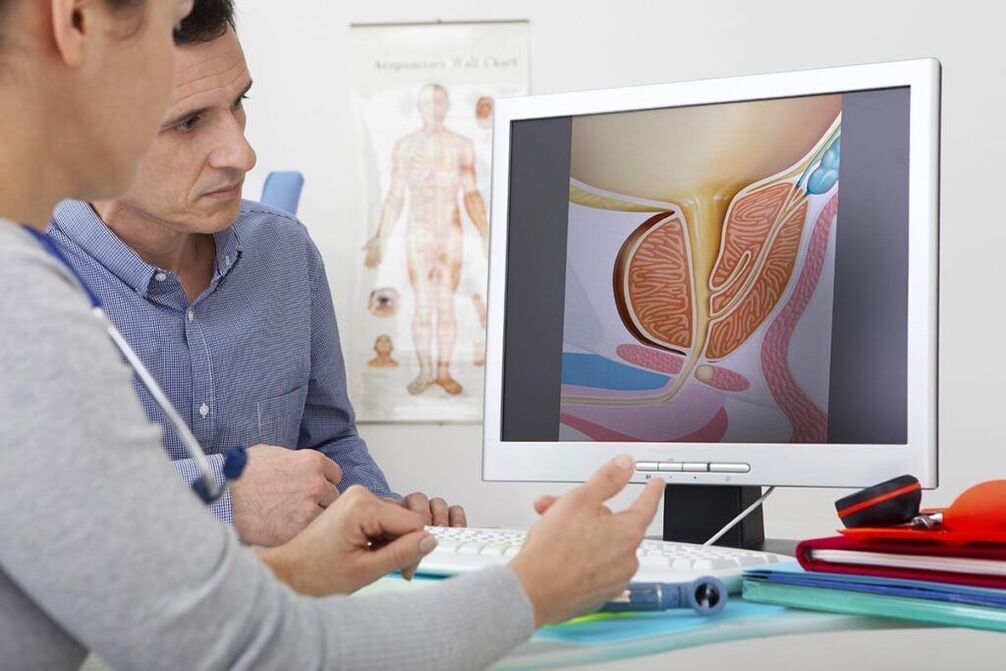
A diseased prostate is often the cause of many unpleasant diseases, it can make it difficult for a man to have sex and even disrupt his fertility. It should also be noted that tens of thousands of men are diagnosed with prostate cancer every year in every European country.
Many men are ashamed of prostate gland problems and do not go to the urologist. Learn more about the prostate itself, its diseases, and its relationship to infertility in this article.
What is the prostate for?
The prostate, also known as the prostate gland, is small in size, about the size of a walnut, but has a very important reproductive function. The gland is located at the junction of the urinary tract - below the bladder, at the right mouth of the urethra, and passes through the center of the organ.
The prostate gland is a gland, which means that the prostate secretes a substance that performs a certain function in the body, just as the sweat glands secrete sweat and the liver secretes bile. This substance is a cloudy whitish liquid in semen. That is, the secret produced by the prostate is part of the sperm and performs the function of nutrition. Thanks to it, the sperm can maintain the necessary parameters - be sufficiently alive and mobile.
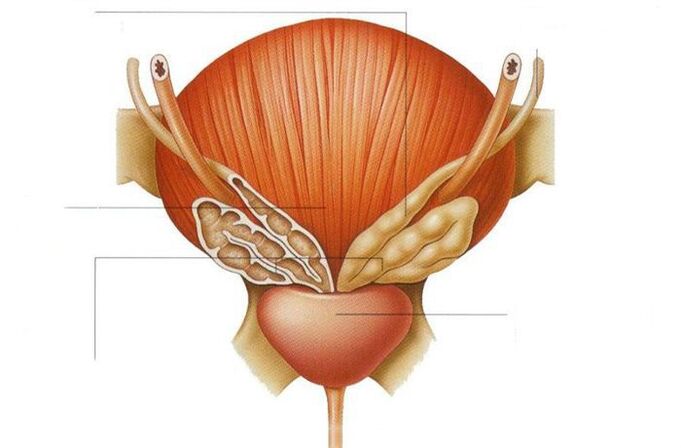
In addition, PSA protein is produced in the prostate gland, which is involved in the fertilization process. So, there is no doubt that male fertility depends mainly on the state of the prostate and any problem with the prostate gland can make it difficult to conceive a child, because they are associated with a decrease in sperm parameters.
The size of the prostate changes throughout life
A boy is born with a prostate the size of a pea. Over the following years, the gland slowly grows, reaching the correct size for an adult male at about 30 years of age. A "good old" male prostate is about 2. 5 cm high, 4 cm wide and 3 cm thick, and weighs between 15 and 20 g.
30 years is a period of relative stabilization, during which the prostate does not grow as fast as before. It increases again around the age of 45. This is due to a decrease in the level of male sex hormones, including the most important of them - testosterone.
When changing the size of the prostate, we are already talking about the so-called benign prostatic hyperplasia, which can be associated with unpleasant symptoms at this stage.
Benign prostatic hyperplasia - what are the symptoms?
The most common symptoms reported by men with benign prostatic hyperplasia are:
A man may also feel that his bladder is not completely empty. In addition, urine may leak uncontrollably from the bladder.
All these symptoms are the result of the pressure of the prostate on the urethra, which makes it difficult for urine to flow properly. Urinary retention in the bladder can in turn lead to recurrent urethral infections, bladder infections and stone formation, and in the worst cases, even kidney failure.
But the worst thing is that similar symptoms accompany other dangerous pathologies - prostatitis and prostate cancer. Therefore, it is very important for a person to contact a urologist as soon as he sees the first alarming symptoms.
Acute and chronic prostatitis mainly affects young men
Prostatitis can be of bacterial or non-bacterial origin. This may be due to germs or stagnant secretions produced by the prostate gland. It mainly affects young men aged 20-40.
- increased urination;
- burning sensation when urinating;
- sometimes an increase in body temperature.
Treatment of prostatitis is not the easiest, because many antibiotics do not penetrate the prostate gland well.
Prostatitis is one of the main causes of male infertility. Treatment of this pathology is seriously needed.
Prostate cancer is another disease of the prostate.
Prostate cancer is one of the most common cancers in men in Europe. Every year, doctors in every country make this diagnosis in tens of thousands of people. According to statistics, this cancer affects about 30% of 50-year-old men and 80% of 80-year-old men. At the same time, it is the third cause of death from cancer.
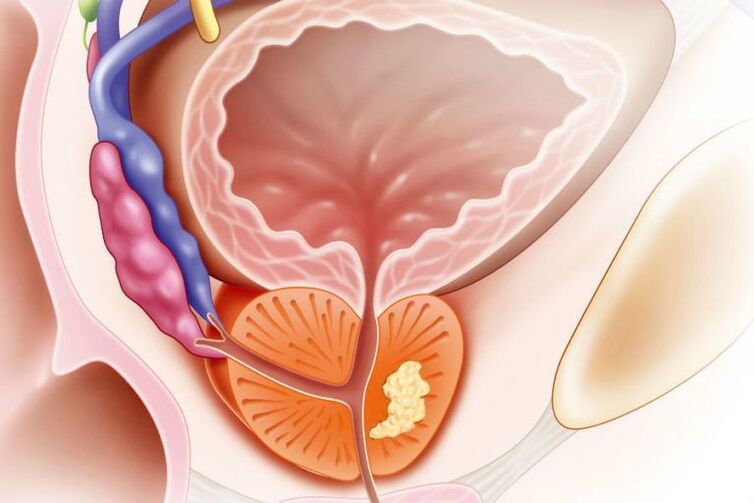
Prostate cancer
A characteristic feature of prostate cancer is that it grows very slowly and is usually asymptomatic - at least initially. Symptoms, if present, are very similar to those associated with benign prostatic hyperplasia.
Are there men at higher risk for this cancer? Yes! Predisposition to prostate cancer will be obesity and sedentary lifestyle, untreated urinary tract inflammation, excessive sexual abstinence, as well as genetic factors.
Prostate cancer can be treated if detected early. Unfortunately, many men postpone visiting a urologist due to embarrassment and fear of a painful and unpleasant diagnosis. In the meantime, it is enough to take a few simple tests to protect yourself from this dangerous disease.
When it comes to fertility, infertility is guaranteed with advanced prostate cancer. Therefore, a timely examination by a urologist is the key to a man's reproductive health.
prostate massage
Prostate massage is a useful urological manipulation aimed at protecting men's health. It helps to restore the blood supply of the pelvic organs, normalize metabolic processes, improve tissue regeneration, increase the effectiveness of drug treatment, remove accumulated toxins and pus residues, increase the body's immune resistance and solve potential problems.
In a specialized medical clinic, you can take a course of therapeutic prostate massage to relieve unpleasant symptoms or restore potency at a reasonable price. The procedure is performed by urologists of the highest qualification category. The rich experience of specialists allows to perform a delicate procedure with minimal discomfort for patients. The price of the massage is calculated individually depending on the condition of the patient.
The purpose of therapeutic prostate massage
Therapeutic massage is an effective prevention of the development of various diseases of the prostate gland (including cancer). It helps the flow of prostate secretion, reduces inflammation, improves muscle tone.
The procedure helps to get rid of discomfort and pain in the perineum, and also increases sexual activity and potency. It is usually combined with drug treatment, which makes it more effective.
The price of prostate massage depends on the duration of the course, which is selected individually by a professional urologist of the medical center depending on the patient's condition.
If you want to make an appointment with a specialist or clarify the price of the service, use the feedback form or call the 24-hour phone number listed on the site. Our consultants are always ready to answer any question in as much detail as possible.
Indications for prostate massage
The main indication of therapeutic prostate massage is the diagnosis of prostatitis of infectious or non-infectious origin. It is also prescribed for:
- chronic pain in the pelvic region;
- congestion in the prostate gland;
- hereditary tendency to prostatitis;
- erectile dysfunction caused by pathologies of the prostate gland;
- decrease in male sexual activity.
The effectiveness of prostate massage for these problems has been confirmed by numerous clinical studies. Our patients tolerate the manipulation very well, because it lasts 1-2 minutes and is as painless as possible. The doctor always controls the force of pressure on the prostate gland, depending on the individual feelings of the man.
How is prostate massage done?
Results of the procedure:discharge of prostate secretion
The patient takes the knee-elbow position or lies on his side. The doctor puts on gloves and inserts his finger into the rectum to a depth of 4-5 cm. Then he gently massages the prostate until a secret starts to come out of it.
In chronic prostatitis, the doctor will prescribe a course of prostate massage. As a rule, it includes 10 to 15 procedures given at intervals of 2-3 days. After the end of the course, there is a break of 2-3 weeks, after which the procedures are repeated.
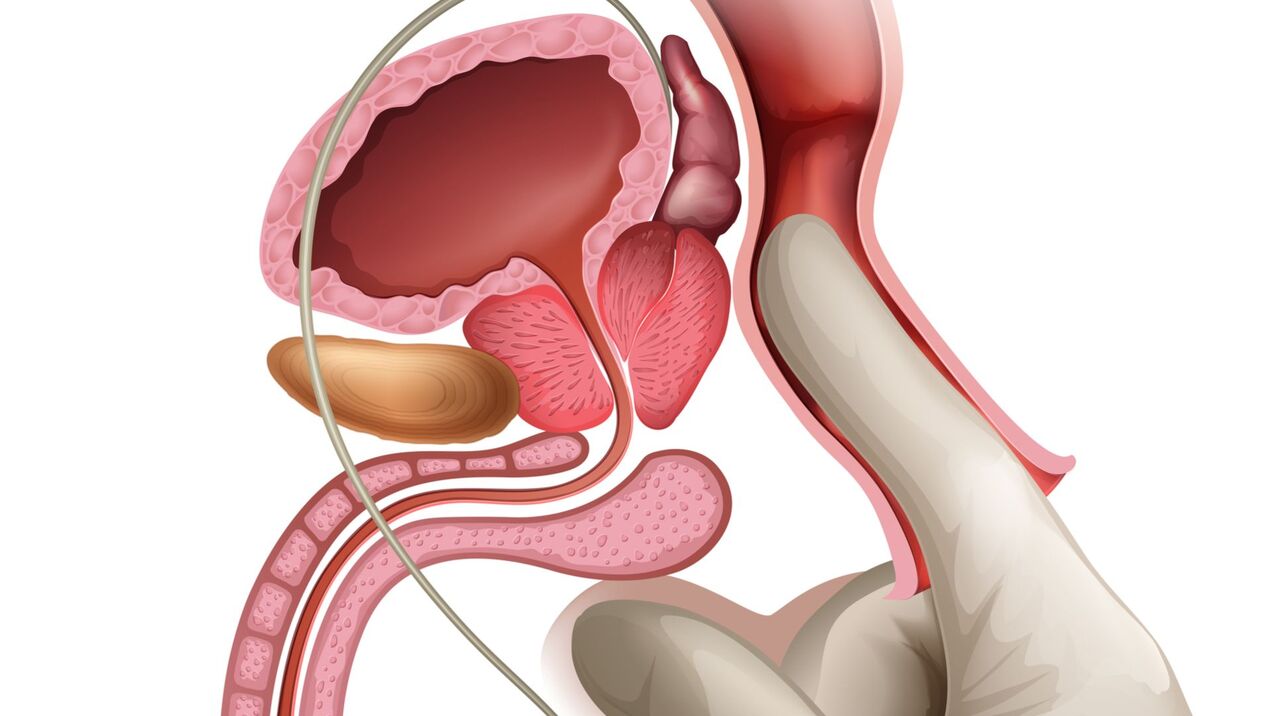
Useful information
In some cases exposure to the prostate is undesirable. Manipulation is not performed during acute bacterial prostatitis and other infections of the genitourinary system, stones, abscesses, malignant tumors in the prostate, hemorrhoids, urinary retention.























